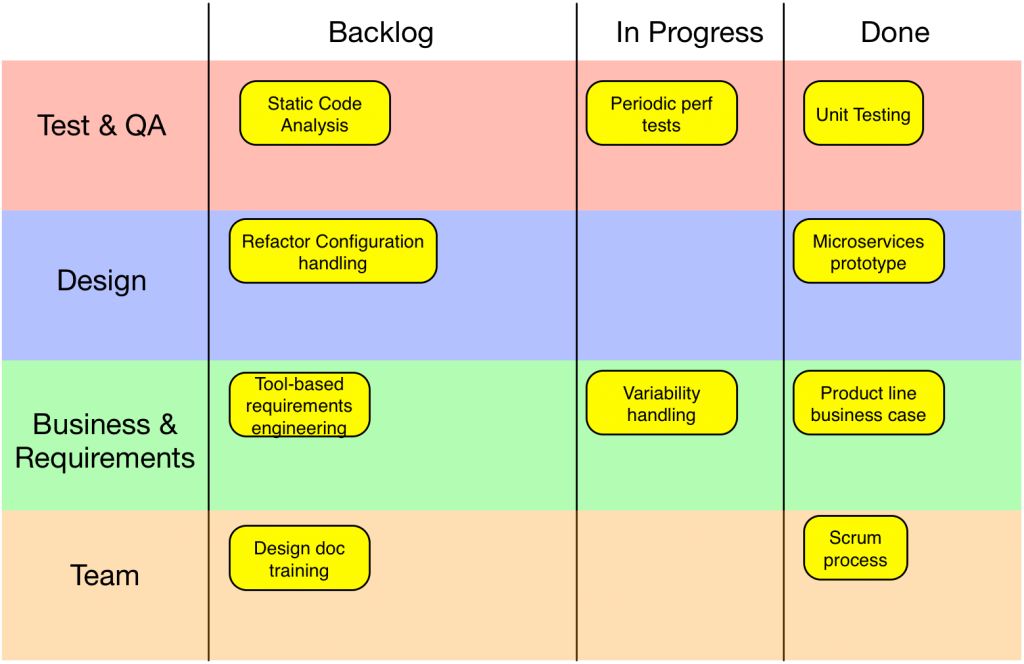A good vision can be demotivating. An architect maintains a vision (north star) for a system that is hopefully shared by at least the key stakeholders. Every step of the evolution of the architecture is taken towards to this vision. However, there are also cases where the evolution is not advancing towards this vision: it can be stagnating, maybe even moving in another direction due to uncontrollable factors. “We could be so much better, but we are still faltering in this quicksand!” Such a situation is frustrating as hell.
When I came across Gunter Dueck explaining the Utopia Syndrome, I was thinking about such a situation. Shortly, the utopia syndrome is about setting unrealistic goals, and being unhappy when the goals are not reached.
Agile methods can help for getting out of such situations. Dividing the vision into a set of good ideas that are implementable in short time frames with limited resources, and give instantaneous feedback (ROI, adoption etc.) will make the problem much more approachable. One method I use is to create a Kanban board with three simple columns (backlog, in progress, done) and distribute the ideas to these columns[1]If you like, you could also have some areas shown as rows, and use size for required investment and color for priorities etc. Play around :-) . See the picture below for an example. That way I make sure to focus on a few ideas to get them done. It also creates a very useful visualization that makes it possible for the team to become aligned on a concrete basis very quickly.

On this basis, you can apply the pattern Court-Locker Room: Pick an idea, implement it in a short timeframe, and pick the next one. This will give you a fairly continuous rate towards the vision, providing motivation to the team and you the architect.
Of course, it’s not a silver bullet. You need to watch against some caveats:
- Vision is suffocated by daily work: With the Kanban board, you are actually limiting the bandwidth you require for the implementation of the vision. If other stakeholders requesting new features, bugfixes etc. are not limiting their demands; or if there is no strategic minimum resource commitment to the implementation of the vision; the bandwidth needed for the vision will be suffocated.
- Differing opinions about the rate towards the vision: If you’re successful, you will be implementing your vision with an easily measurable velocity. If you as a team are having doubts about your speed, you might need to align on a velocity target for the vision.
- Superficial adoption: It might be that you are getting great positive feedback about the Kanban board and the ideas. But are you also getting valuable input/feedback about them? Any criticism on some ideas, any new candidates for the board, any discussion about the priorities of the ideas? If none of them are coming, you may have a case of superficial adoption, in which everybody says YES!, but doesn’t actually care.
- Hidden, conflicting vision: Are all stakeholders open about their future prospects about the system? Maybe they have another vision, which is not as clearly visible as the Kanban board, that is also in conflict with the Kanban board.
- Key stakeholders not involved: You tend to believe that the ideas with the major costs aside, the vision is implementable within the SW project, so involving the project team and project leadership would be enough. Organizations with micromanagement cultures violate this assumption. Even mid-sized ideas require support from higher management, for instance because they control the schedule or the budget too tightly. In that case, if you are not making the Kanban board visible to the higher level micromanagers, you cannot gather the support for implementing the ideas on it.
May your vision be collectively adopted, and speedily implemented! :-)
Footnotes
| ↑1 | If you like, you could also have some areas shown as rows, and use size for required investment and color for priorities etc. Play around :-) |
|---|